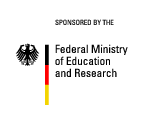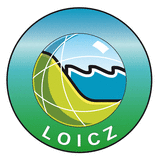Results on Pesticides in October 2009
The pesticide monitoring campaign started August 2008 and ended September 2009. To date, surface water samples taken between August 2008 and April 2009 are analysed. Thirteen of the fifteen target compounds (buprofezin, butachlor, cypermethrin, difenoconazole, endosulfan sulphate, fenobucarb, fipronil hexaconazole, isoprothiolane, profenofos, pretilachlor, propanil and propiconazole) were detected in water samples taken at the two study sites from field discharges and irrigation canals. The detection frequencies are shown in figure 1.
The pesticide monitoring campaign started August 2008 and ended September 2009. To date, surface water samples taken between August 2008 and April 2009 are analysed. Thirteen of the fifteen target compounds (buprofezin, butachlor, cypermethrin, difenoconazole, endosulfan sulphate, fenobucarb, fipronil hexaconazole, isoprothiolane, profenofos, pretilachlor, propanil and propiconazole) were detected in water samples taken at the two study sites from field discharges and irrigation canals. The detection frequencies are shown in figure 1.
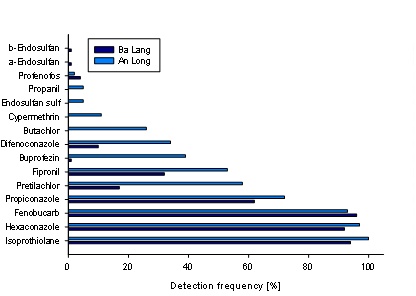
Figure 1: Detection frequencies of the target pesticides in An Long and Ba Lang between August 2008 and April 2009.
Recently used pesticides were present at detectable levels throughout the year in the in two agricultural dominated study sites of the Mekong Delta. The frequent detection of pesticides in rural areas indicates that surface water quality may deserve special attention in these areas particularly because surface water is often used in rural areas for drinking. Overall, concentrations in the surface water were higher in An Long than in Ba Lang which corresponds to the more intensive agricultural setting in An Long. Samples taken during the vegetative phase of the rice development (seeding to stem elongation) typically contained herbicides, while in samples taken during the reproductive (panicle initiation to flowering) and ripening phase (milky stage to mature rice) insecticides and fungicides dominated (Figure 2, Toan et al., 2009).
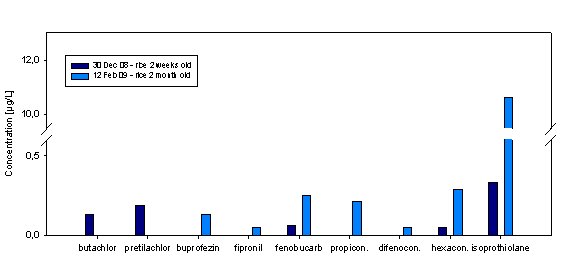
Figure 2: Pesticide concentrations in the discharge of a rice field. Data plotted are the measured concentrations at two different dates at field no. 4 in An Long (Toan et al 2009).
Pesticide concentrations were usually higher in samples taken in the dry season than in the flooding season (September to early December) (Figure 3).
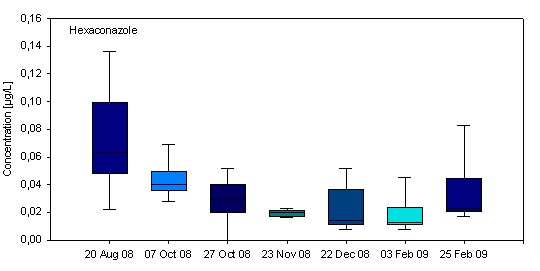
Figure 3: Hexaconazole concentrations in the samples as influenced by the flooding season (September to December). Data plotted are the five-number summary (minimum, lower quartile, median, upper quartile and maximum) of all samples taken at a certain date in Ba Lang (Toan et al., 2009).
In order to determine the potential impact of the pesticide concentrations measured on the environment, aquatic life, and human health, a comparison with published surface water and aquatic life guidelines or benchmarks was undertaken. Following regulations/guidelines were consulted:
1) Vietnam´s National technical regulation on surface water quality (QCVN 08: 2008/BTNMT) and drinking water quality ( QCVN 01:2009/BYT)
2) US EPA's compilation of national recommended water quality criteria for the protection of aquatic life and human health in surface water, 2006
3) EPA´s Aquatic Life Benchmark Table, 2009
4) Draft Assessment Reports compiled by the European Food Safety Authority (EFSA) for buprofezin (2006), difenoconazole (2006), fipronil (2005), and propanil (2008).
5) The Australian drinking water guideline, 2004
6) European Council Directive 98/83/EC on the quality of water intended for human consumption, 1998
7) WHO Guidelines for Drinking-Water Quality, third edition, 2009
8) Health-based screening level (HBSL) in drinking water from the U.S. Geological Survey (USGS), 2008
In summary, aquatic life guideline values for individual pesticides were exceeded for endosulfane, profenofos and cypermethrin. In sum 8% of the samples had concentrations of at least one pesticide that exceeded one guideline value. 69% of the samples taken in An Long, and in 37 % of the samples from Ba Lang more than four different pesticides were detected at the same time. Their effect may be cumulative from a health perspective. Additionally, surface water is used for irrigation and aquaculture purposes which might lead to pesticide accumulation in agricultural/aquaculture products. Furthermore, accumulation in sediments is likely to take place for some of the hydrophobic compounds, which may end up again in the food chain by e.g. using sediment to increase soil fertility or by the consumption of sediment-dwelling/filtrating organisms. Harm could be caused also by using the surface water as drinking water source which is frequently the case in the Delta.
The assessment of the data presented here provides an initial estimation of the potential importance of pesticides to water quality in the Mekong Delta by comparing measured concentrations with water-quality benchmarks. By assessing the data following limitations need to be considered:
Potential adverse effects of pesticides on humans and aquatic life can only be partially assessed because the monitoring programme only includes fifteen pesticides although our surveys assure that the pesticide monitored are recently and frequently used.
In addition, most compounds analyzed do not have benchmarks.
Most guideline values used for comparison in this report were derived by using aquatic organisms which do not necessarily occur in Vietnam. Risk assessment with indigenous aquatic organisms could fill the gap.
Most benchmarks used in this report are based on toxicity tests of individual chemicals, whereas the results indicate that usually more than four pesticides occur in the samples. Comparisons to single-compound benchmarks may tend to underestimate the potential for adverse effects for some sites.
References
Australian Drinking Water Guideline 2006,
http://www.nhmrc.gov.au/publications/synopses/eh19syn.htm#comp
(accessed October 2009)
Council Directive 98/83/EC of 3 November 1998 on the quality of water intended for human consumption, Adopted by the Council on 3 November 1998,
direct link to document
(accessed October 2009)
Toan, V. P., Sebesvari, Z., Rosendahl, I., Renaud, F. (2009): Residue concentrations of recently used pesticides in surface water at two representative study sites of the Lower Mekong Delta, Vietnam. Pesticide Behaviour in Soils, Water and Air 14-16 September 2009, York, UK.direct link
(accessed October 2009)
Toccalino, P.L., Norman, J.E., Booth, N.L, and Zogorski, J.S., 2008, Health-based screening levels: A tool for evaluating what water-quality data may mean to human health: U.S. Geological Survey, National Water-Quality Assessment Program,
http://infotrek.er.usgs.gov/traverse/f?p=HBSL:HOME:0
(accessed October 2009)
QUY CHUẨN KỸ THUẬT QUỐC GIA VỀ CHẤT LƯỢNG NƯỚC ĂN UỐNG (National technical regulation on drinking water quality), 2009, QCVN 01:2009/BYT, Hanoi 2009
QUY CHUẨN KỸ THUẬT QUỐC GIA VỀ CHẤT LƯỢNG NƯỚC MẶT (National technical regulation on surface water quality), 2008, QCVN 08:2008/BTNMT, Hanoi 2008
US EPA, 2009, Aquatic Life Benchmark Table, http://www.epa.gov/oppefed1/ecorisk_ders/aquatic_life_benchmark.htm
(accessed October 2009)
US EPA, 2006, National recommended water quality criteria, http://www.epa.gov/waterscience/criteria/wqctable/
(accessed October 2009)
WHO Guidelines for Drinking-Water Quality, third edition, 2009, http://www.who.int/water_sanitation_health/dwq/guidelines2/en/
(accessed March 2009)


